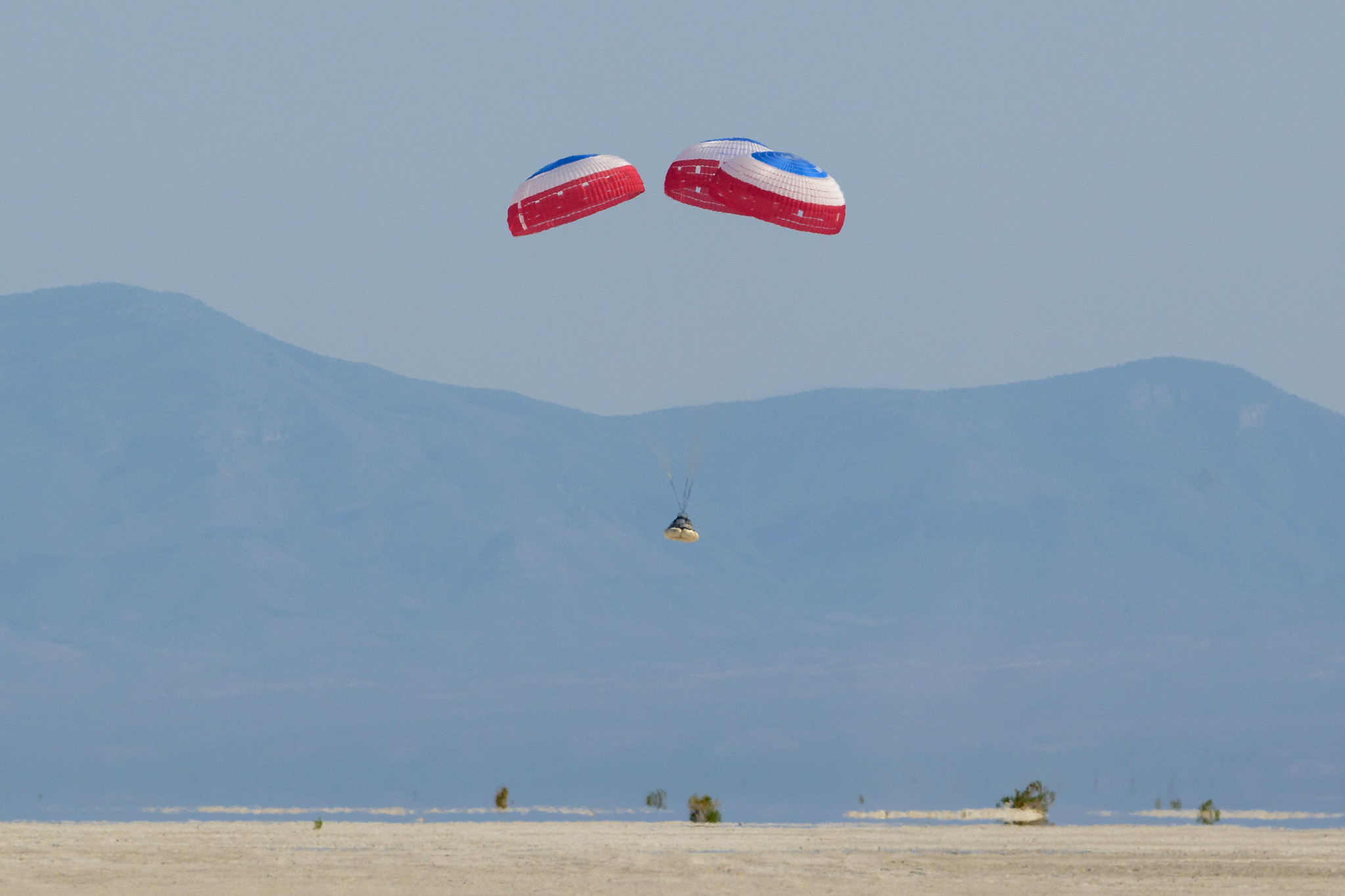What's next for Boeing's Starliner capsule after historic space station mission?
Starliner could fly astronauts for the first time later this year.

Boeing's Starliner capsule will get a thorough going-over now that it's back on Earth.
Starliner launched on May 19, kicking off a crucial uncrewed demonstration mission to the International Space Station called Orbital Flight Test 2 (OFT-2). The spacecraft docked with the orbiting lab a day later, then came back to Earth on Wednesday (May 25), touching down as planned at White Sands Missile Range in New Mexico.
OFT-2 was designed to show that Starliner is ready to carry astronauts to and from orbit for NASA, which signed a contract with Boeing for such services back in 2014. And NASA and Boeing don't plan to waste any time in getting Starliner ready for crewed flight.
Live updates: Boeing Starliner Orbital Flight Test 2 mission to ISS
Related: Boeing's Starliner OFT-2 test flight for NASA in amazing photos
During a press briefing shortly after Starliner landed on Wednesday, Mark Nappi, vice president and Boeing commercial crew program manager, said teams would be soon move the vehicle to a staging area to prep it for shipment back to the company's facilities at NASA's Kennedy Space Center in Florida, where it is scheduled to arrive around June 9. Then, Nappi said, Boeing will begin preparing Starliner for its first crewed mission, known as Crew Flight Test (CFT).
That being said, NASA will need to review data from OFT-2 before certifying Starliner for crewed flight. And there will be some issues to check, because the mission didn't go perfectly smoothly. For example, two of Starliner's thrusters failed during its orbit-insertion burn, which occurred about half an hour after launch. (A backup thruster kicked on at the right time, and Starliner managed to complete the burn.)
A target date for CFT has not been determined, and NASA and Boeing have not yet announced which astronauts will fly on the mission. However, leaders at both organizations have expressed hope that the test flight, which will carry astronauts to the orbiting lab, will occur before the end of the year and have indicated that specifics for a launch date and crew complement could be finalized sometime this summer.
Get the Space.com Newsletter
Breaking space news, the latest updates on rocket launches, skywatching events and more!
Boeing isn't the only company to hold a contract with NASA's Commercial Crew Program. SpaceX signed one in 2014 as well and has already launched four operational crewed missions to the space station with its Falcon 9 rocket and Dragon capsule.
In Wednesday's post-landing press conference, NASA Commercial Crew Program manager Steve Stich referenced a photo he'd seen with both Starliner and Dragon docked at the space station.
"You know, I'm getting goosebumps a little bit talking about it, because, between Starliner and Dragon, that's really what this this commercial program has really been about all along — having these two different companies, with the great systems they've developed, provide crew transportation to the space station under this new commercial crew model," Stitch said. "And the flight that we have just landed today demonstrates that the Starliner is a great vehicle for crew transportation."
NASA astronaut Suni Williams is one of a select few who have been training to fly in Starliner, and she has worked with Boeing teams through the vehicle's development. At a press briefing on May 18, Williams was already looking forward to Starliner's return, saying, "We want the spacecraft to get back so we can start testing the environmental control system … There's a lot of work ahead of us before we get to the crewed flight, but we're chomping at the bit."
OFT-2 was Starliner's second attempt at an uncrewed mission to the space station. During the first one, which launched in December 2019, Starliner suffered software glitches and got stuck in the wrong orbit for a rendezvous. And OFT-2 was supposed to launch last summer, but routine checks revealed more than a dozen stuck valves in Starliner's propulsion system, an issue that ended up grounding the mission for more than eight months.
Follow us on Twitter @Spacedotcom or on Facebook.
Join our Space Forums to keep talking space on the latest missions, night sky and more! And if you have a news tip, correction or comment, let us know at: community@space.com.

Josh Dinner is the Staff Writer for Spaceflight at Space.com. He is a writer and photographer with a passion for science and space exploration, and has been working the space beat since 2016. Josh has covered the evolution of NASA's commercial spaceflight partnerships and crewed missions from the Space Coast, as well as NASA science missions and more. He also enjoys building 1:144-scale model rockets and human-flown spacecraft. Find some of Josh's launch photography on Instagram and his website, and follow him on X, where he mostly posts in haiku.









